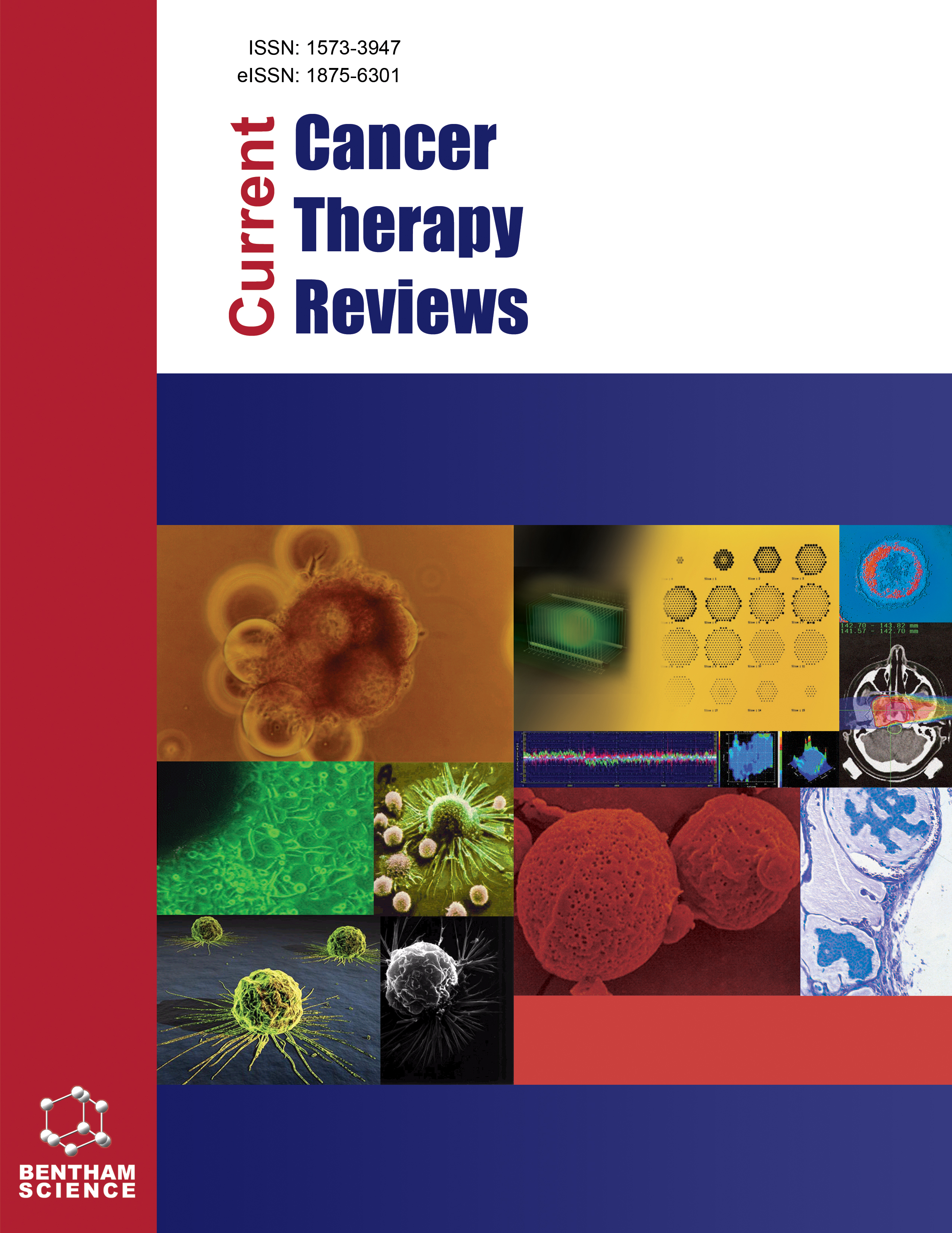- Home
- A-Z Publications
- Current Cancer Therapy Reviews
- Previous Issues
- Volume 11, Issue 4, 2015
Current Cancer Therapy Reviews - Volume 11, Issue 4, 2015
Volume 11, Issue 4, 2015
-
-
The Involvement of Heat Shock Proteins and Related Molecules in the Resistance to Therapies in Breast and Gynecologic Cancer
More LessThe HSP response is implicated in conferring to breast and gynecologic malignancies different sensitivities to anticancer therapies including chemotherapy, endocrine therapy and immunotherapy (we are in the need of more studies about radiotherapy). The heat shock proteins are mainly implicated in cell death mechanisms, in cell differentiation including epithelial-mesenchymal transition, in tumor dormancy, in an Read More
-
-
-
New Ways to Improve Breast Cancer Therapy Targeting Specific Molecular Pathways
More LessAuthors: John P. Schwerkoske and Douglas YeePreclinical laboratory science has revealed multiple new targets for breast cancer therapy. Clinical trials targeting key signaling pathways are underway and a number of new drugs have been approved for treatment. Targeting of growth factor receptors by monoclonal antibodies and tyrosine kinase inhibitors were among the first to be approved, but new small molecules inhibiting the phosphatidylinositol 3-kinase sign Read More
-
-
-
Chemotherapy Resistance in Breast Cancer
More LessAuthors: Polly Niravath and Julie NangiaChemoresistance is a major cause of breast cancer recurrence and death. Currently, drug-resistant disease is treated by selection of another drug(s), without understanding the molecular mechanism(s) involved in a given patient’s chemoresistance. Better understanding of chemoresistance may enable a more informed selection of chemotherapeutic agents and improve patient outcomes. The article review Read More
-
-
-
Understanding Trastuzumab Resistance in HER2 Positive Breast Cancer and Further Therapeutic Options
More LessAuthors: Sangmee Bae and Sara HurvitzTrastuzumab has been clearly demonstrated to improve overall survival for both early and metastatic HER2 positive breast cancer. However, despite the improved clinical outcomes seen with the addition of HER2 targeted therapy to conventional cytotoxic agents, the response rates remain between 30-55% and the majority of patients with advanced breast cancer experience disease progression within 1 year. In this Read More
-
-
-
Treatment of Uterine Carcinomas
More LessAuthors: Mary Chu, Estrelania Williams, D. Stave Kohtz, Tamara Kalir and David FishmanUterine epithelial cancers are the most common type of gynecologic cancer in the United States. The American Cancer Society estimated 53,000 new cases of uterine cancers in 2014 with 8,600 deaths from advanced or recurrent cases, 99% of which are endometrial cancer. The 5-year survival rate of low-stage, low-grade endometrioid adenocarcinoma is greater than 90%. In contrast, advanced stage endometrioid ade Read More
-
-
-
Treatment of High-Grade Pelvic-Type Serous Carcinomas (Ovary, Fallopian Tube and Peritoneum): Current Therapeutic Paradigms, Prospects, and Challenges
More LessAuthors: Mary Chu, D. Stave Kohtz, Estrelania Williams, Tamara Kalir and David FishmanOvarian cancer represents the second most common gynecologic cancer in the United States, with an estimated 22,000 new diagnoses and 14,000 deaths attributed in 2014 [1]. While the term loosely encompasses a large and varied assortment of malignancies, greater than 90% of ovarian cancers are epithelial carcinomas. Again within this category, there are a number of different histologic subtypes however, 60-70% of o Read More
-
-
-
Current Strategies and Future Directions in Classification and Treatment of Uterine Sarcomas
More LessAuthors: Mary Chu, D. Stave Kohtz, Estrelania Williams, Tamara Kalir and David FishmanUterine sarcomas comprise endometrial stroma tumors (EST) and uterine leiomyosarcomas (ULMS), with ESTs accounting for less than 2% and ULMS accounting for approximately 1% of uterine neoplasms. Recent classifications of ESTs denote as many as four categories: benign endometrial stromal nodule (ESN), low-grade endometrial stromal sarcomas (ESS), high-grade endometrial stromal sarcomas (HGESS), and undiffere Read More
-
Volumes & issues
-
Volume 21 (2025)
-
Volume 20 (2024)
-
Volume 19 (2023)
-
Volume 18 (2022)
-
Volume 17 (2021)
-
Volume 16 (2020)
-
Volume 15 (2019)
-
Volume 14 (2018)
-
Volume 13 (2017)
-
Volume 12 (2016)
-
Volume 11 (2015)
-
Volume 10 (2014)
-
Volume 9 (2013)
-
Volume 8 (2012)
-
Volume 7 (2011)
-
Volume 6 (2010)
-
Volume 5 (2009)
-
Volume 4 (2008)
-
Volume 3 (2007)
-
Volume 2 (2006)
-
Volume 1 (2005)
Most Read This Month
Article
content/journals/cctr
Journal
10
5
false
en


